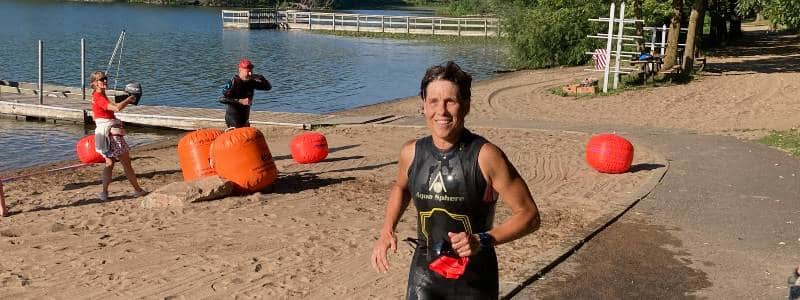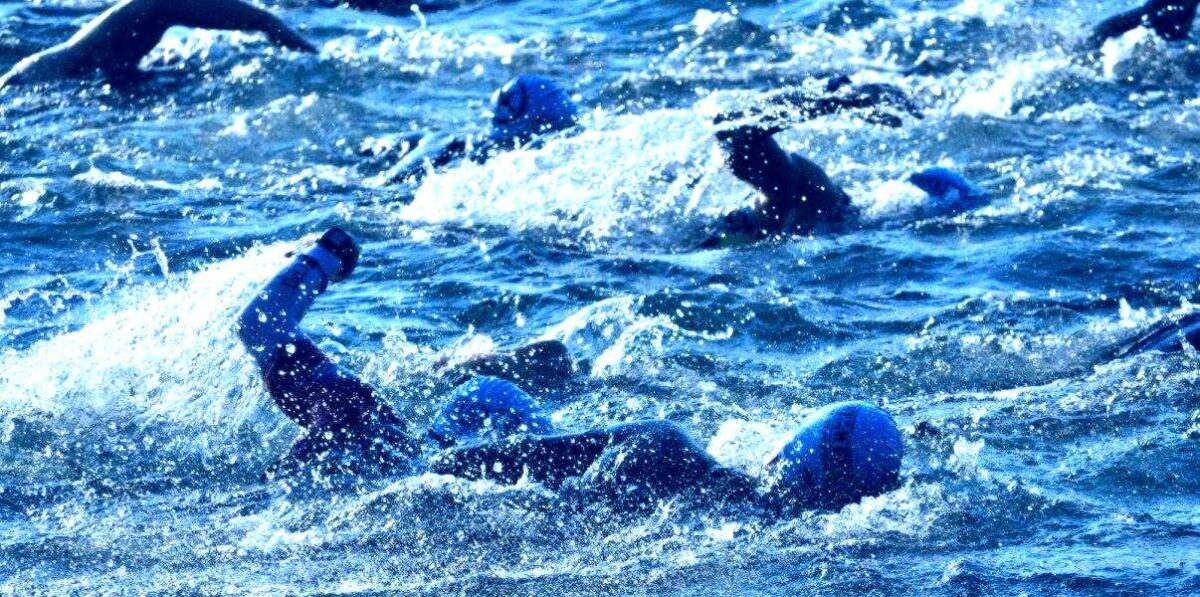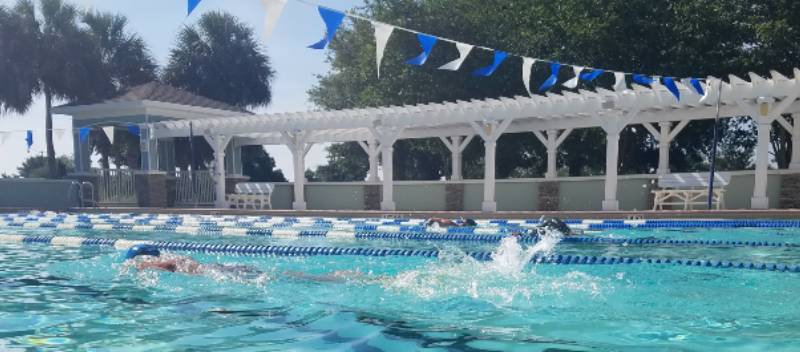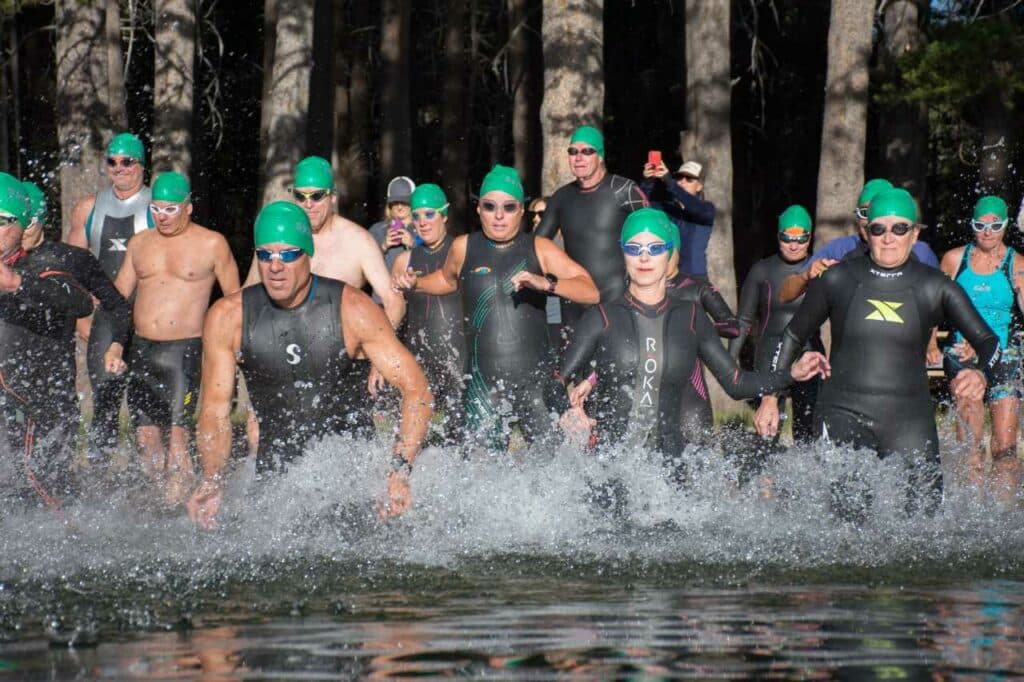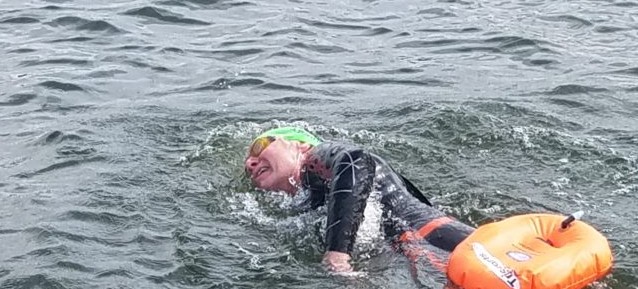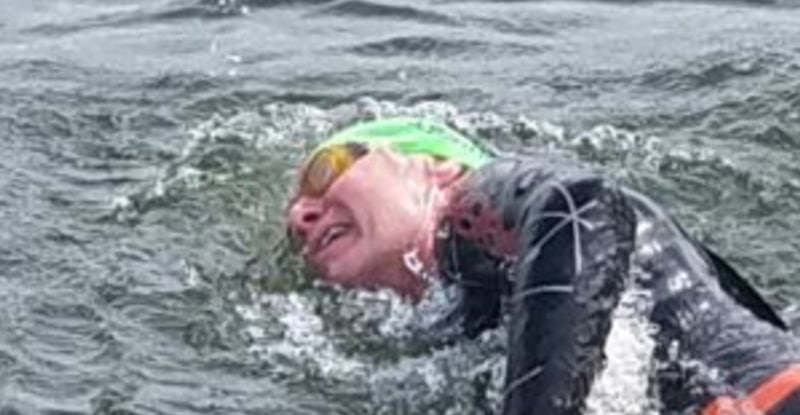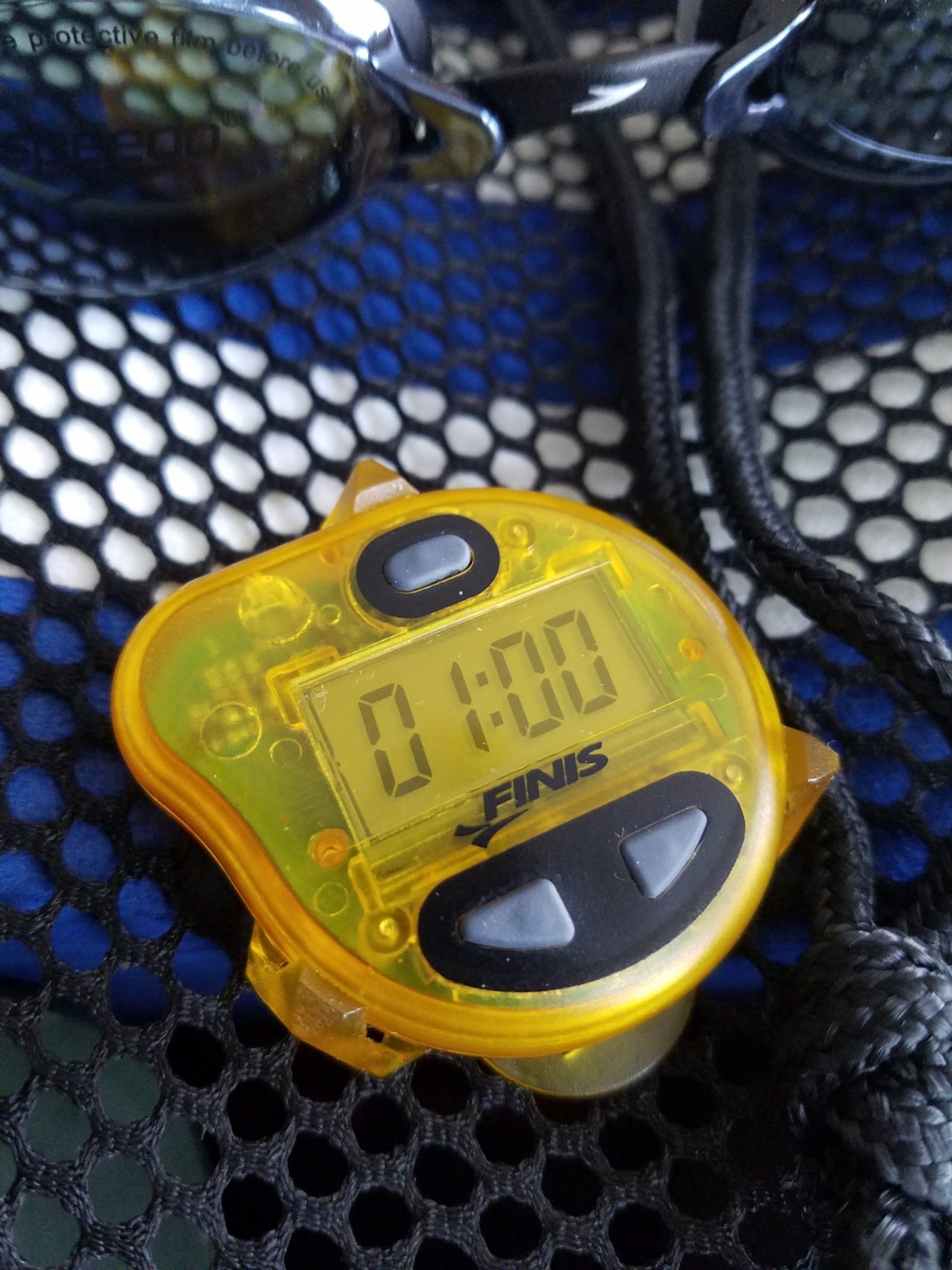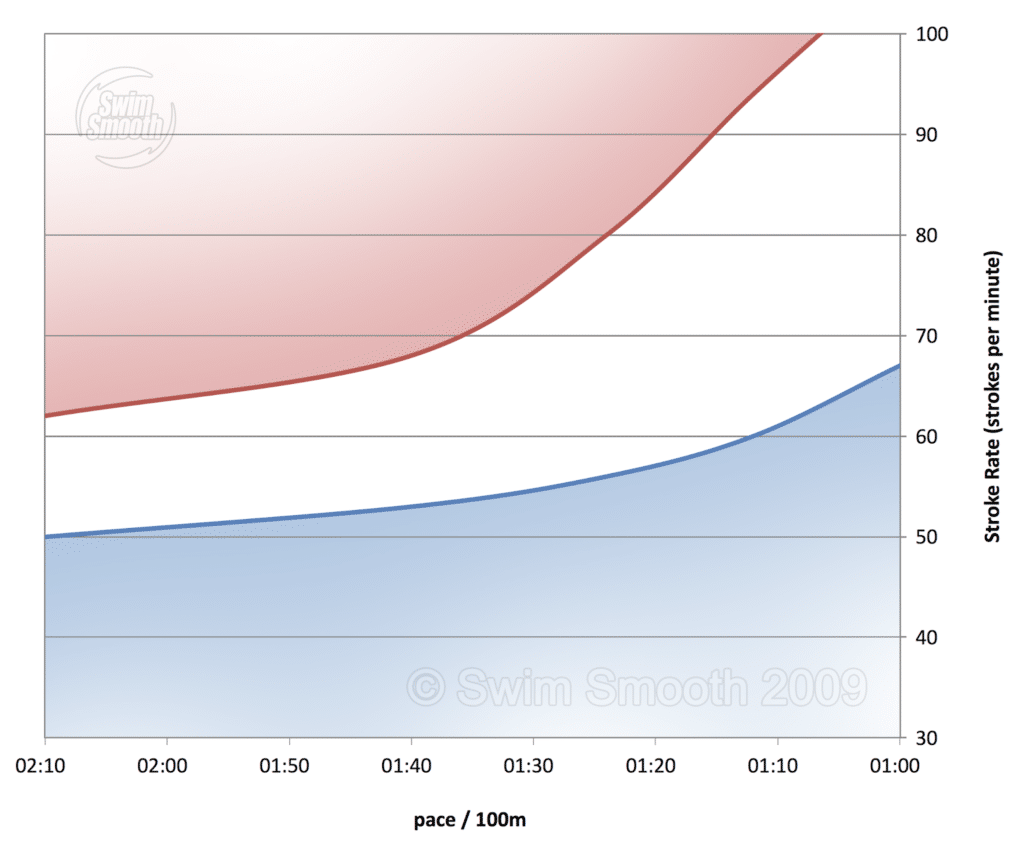Quickest Way To Your Faster Triathlon Swim
This post had its genesis while reading Why I Quit Masters Swimming. In this article in Triathlete magazine, the author, Marshall Ellis, colorfully described his frustration with swimming drills. He felt like he never just swam because of the time spent on drills.
Still, many books and blog posts on training for the triathlon swim encourage various types of drills. These are one reason I have a backpack dedicated to swim training aids: fins, paddles, kickboard, and more.
What Is Your Goal?
Most of us training for triathlon or aquabike are not aiming to be elite swimmers. Our goal is to swim the race course for the distance in which we have chosen to compete. We want to finish with a competitive time, especially within the cut-off time, if the race has one, so we can continue with the bike leg. And, we also want to have enough energy after the swim to continue to finish the race.
Considerations For Training For A Faster Triathlon Swim
Within this context, our swim training needs to consider the following:
- Triathletes need to become comfortable swimming in open water. This means consistent swimming, some in open water mimicking race conditions, or those you may encounter. In other words, don’t just swim in calm water, but practice in choppy water as well. And, if your race is at a higher elevation than you are accustomed to, try to swim some in these conditions before race day. Through a practice swim, you will learn how your body reacts to the altitude.
Related Post: Planning For A Triathlon At Higher Altitude
- Completing a triathlon swim, no matter the distance, requires aerobic fitness. Building a strong aerobic base is as important for swimming as it is for running and cycling. The good news is that aerobic capacity built through biking and running will benefit the same cardiovascular system called upon in swimming.
- Swimming relies on additional muscles, many not as important for biking and running. Specific training to strengthen our core, shoulders, back, and arms leads to faster swimming.
- Of particular importance to older triathletes is swimming efficiency. As we age, our fight to maintain strength becomes more difficult. For many, it’s a losing battle. However, we can overcome reduced strength by developing greater efficiency, following the “work smarter, not harder” aphorism.
In summary, training for a faster triathlon swim requires a mix of strength training, swim technique development, and yards (or meters) of swimming.
But, where should we focus?
To answer this question, I prepared a pros and cons assessment for drills-focused and distance-focused swim training. To me, there should be no debate about the merits of strength training as part of a comprehensive triathlon training program.
Drills-Focused Training Pros and Cons
Pros
- Drills can be an effective tool for improving swimming efficiency by isolating movements within the swim stroke. This allows one to focus on improving stroke mechanics, body position, and the “catch.”
- Through drills, we can learn what the components of an efficient stroke feel like. We begin to feel when we are and are not using an efficient stroke.
- Avoiding improper movements helps prevent injury, especially when these movements are repeated hundreds or thousands of times.
- Reduces the monotony of swimming back and forth tens of times.
Cons
- Drills can neglect the need to put all the pieces together for an efficient stroke.
- Poorly explained drills can be confusing, demoralizing, and a waste of precious training time.
- Many drills do little to build aerobic fitness.
My perception, based on my experience trying to apply drills only read about, is that drills require a dedicated coach. A coach will make sure each drill is performed correctly and developing the intended skills.
Distance-Focused Pros and Cons
Pros
- Builds swim fitness, both in terms of aerobic fitness and strength of the specific muscles for swimming.
- Prepares for the distance required on race day and, if done right, various conditions to become a more confident swimmer. Don’t underestimate the value of confidence to face both the knowns and unknowns of race day. You are not swimming fast if you pause to catch your breath after being slapped in the face by a big wave.
Cons
- Repeating poor stroke mechanics, body position, and the like, during thousands of strokes reinforces these bad habits.
- Repetition of poor mechanics is more likely to produce overuse injuries.
- Swimming performance will often plateau without a coach observing your stroke and offering skilled advice. Emphasis is on “skilled.”
- Long, continuous swims can be boring. With boredom comes excuses to cut the training short or avoid it all together. At least that’s the way I roll.
The “Quickest Way” for Triathletes Over 50
Our performance in swimming is arguably more technical, that is more dependent on technique, than it is for cycling and running. Because of this, the quickest way to a faster triathlon swim is to prioritize a more efficient swim stroke. Strength and aerobic fitness training, including swimming in race conditions, top off the swim portion of training.
This is precisely the approach of the TriDot Pool School. According to Brandy Ramirez, Director of TriDot Pool School, “the only way to improve an athlete’s swim technique is to solve the root cause of the inefficiency. This correction can only be done by stripping away the athletes’ preconceived swim techniques (the flawed technique) and building from the ground up. While I know this sounds like a heavy lift and one might think this would take months to complete, I can attest that this is exactly what we do at TriDot Pool School.
“In the course of 2 days (4 hours on Saturday and 4 hours on Sunday) our skilled Instructors walk athletes through our program and improve their efficiency in only 8 hours time. We see an average 13% improvement of swimmer’s times and 100% improvement on stroke.”
The TriDot Pool School website describes the approach, including preparation before the two days and continued stroke development exercises afterward. The website also includes a near-term schedule of classes.
Here’s To A Faster Triathlon Swim
Each of us is unique in our habits, capabilities, and needs. Some will benefit from a new stroke technique more than others. Still, from the testimonies on the TriDot Pool School website, even professional triathletes will benefit from a periodic review of their technique.
For our fastest triathlon swim, we need an efficient stroke along with aerobic fitness and strong swimming muscles.
What Works For You?
This post is based on my reading and comments of TriDot coaches who help with some of this site’s content.
I would like to hear from you. What has worked for you as you trained for a faster triathlon swim?
Comments: Please note that I review all comments before they are posted. You will be notified by email when your comment is approved. Even if you do not submit a comment, you may subscribe to be notified when a comment is published.

